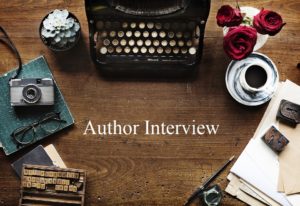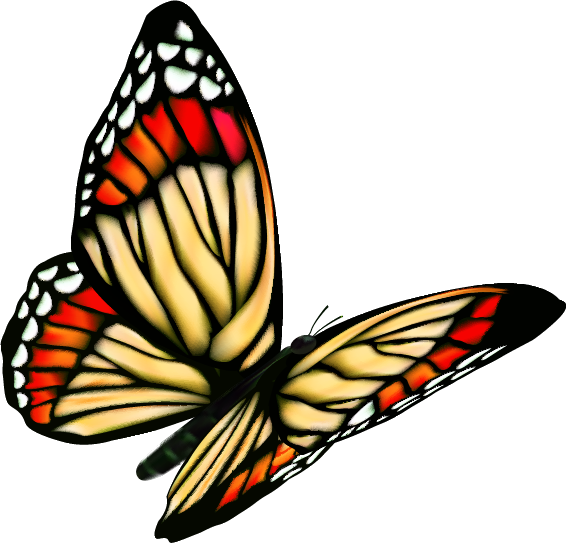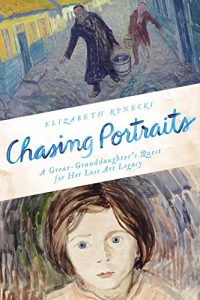An Interview with Elizabeth Rynecki
 I first came across Elizbeth Rynecki and her work when I participated in her own interview series, Authors Answer. And I’m so glad I did because it introduced me to her beautiful book, Chasing Portraits: A Great-Granddaughter’s Quest for Her Lost Art Legacy. The description of the book states,
I first came across Elizbeth Rynecki and her work when I participated in her own interview series, Authors Answer. And I’m so glad I did because it introduced me to her beautiful book, Chasing Portraits: A Great-Granddaughter’s Quest for Her Lost Art Legacy. The description of the book states,
“Spanning three generations, Chasing Portraits is a deeply moving narrative of the richness of one man s art, the devastation of war, and one woman’s unexpected path to healing,” and readers have praised its authenticity of voice and pace. One reader recalls how the book is much more than what the title implies, saying, “The book is a fascinating combination of the Rynecki family history, the author’s own journey, and tidbits from the art world,” and another wrote, “It’s a fresh approach to understanding history in shades of grey instead of black and white.” According to her Instagram bio, she’s at work on a “personal look at Dad’s ship salvage career,” and I’m looking forward to reading that some day. Many thanks to Elizabeth for making room in her schedule to answer a few of my questions.
Christina: Your book, Chasing Portraits: A Great-Granddaughter’s Quest for Her Lost Art Legacy, was published in 2016. What prompted you to begin the quest, and what prompted you to write about it? Did you ever consider fictionalizing the story?
Elizabeth: Grandpa George died in 1992. While cleaning out his home, we discovered in the trunk of his car, a memoir of his pre-war and wartime memories. In it he wrote:
Some say it will never happen again. Well, it’s too easy. It did happen. They killed openly without fear. Where and how did they have that much hatred toward us? It could happen again. We cannot and will not forget. We will carry it, like the Bible, forever. There are hundreds of books on the subject. Nevertheless, I am a Jew and I write. I’ll do it till the end of my days. If only for my granddaughter, Elizabeth, to know the truth, and not to be afraid of it.
If history and legacy make a sound as they fall upon your shoulders, the clamor of Grandpa’s words landing on mine was deafening.
For a long time, I worried about how I, the daughter and granddaughter of Holocaust survivors, could bear witness. I can’t. But my great-grandfather’s paintings are survivors too, and they can’t speak. I took it upon myself to tell their story.
Truth is stranger than fiction! It never occurred to me to fictionalize the history.
Christina: Can you tell those of us not familiar with your great-grandfather, Moshe Rynecki, a little bit about who he was as an artist and a person? What stories about him did you learn from his art?
Elizabeth: My great-grandfather was born in 1881 in Miedzyrzecze, a Polish shtetl (a small Jewish settlement) about 60 miles east of Warsaw. His family later moved to Siedlce, a somewhat larger town. His father (my great-great grandfather) was a tailor who mostly made uniforms, dabbled in architectural sketches, and real estate. Family lore has it that Moshe began drawing, sketching, and painting at an early age. His father wasn’t particularly thrilled about it, but didn’t exactly discourage him. By the time Moshe was in his late teens, his father hoped he’d abandon his interest in the arts and get a real job – something that would provide a steady income. That sort of work didn’t interest Moshe who continued to paint religious scenes, day laborers, and craftspeople. Eventually, he was married off to Perla Mittelsbach. Moshe’s father bought them an art supply store at 24 Krucza in Warsaw (in a part of town that wasn’t particularly Jewish) and together they were meant to run the store. Instead, Perla ran the store and Moshe continued to go out into the world and paint. Although my great-grandfather was largely self-taught, he briefly attended the Warsaw Academy of Art (1906-1907) and had friends and mentors in the Warsaw Jewish art community who influenced his artistic style and interests. Additionally, he was involved in organizations that exhibited and promoted Jewish artists. I like to say that my great-grandfather wasn’t exactly famous, but he was known in the inter-war year period. His paintings were exhibited in gallery shows, written about in Warsaw Yiddish dailies, and featured in German newspapers featuring stories and news about eastern European Jews.
In the early days of the Second World War, my great-grandfather become concerned about his body of work. He divided his collection (thought to be close to 800 works) into bundles which he distributed to friends and acquaintances in and around the city of Warsaw. In November 1940, when the German authorities established the Warsaw Ghetto and ordered Polish Jews to move into 1.3 sq mile ghetto, my great-grandfather willingly went. His son, my grandpa George, refused to go. He got himself, wife, and son (my Dad, Alex) false papers which enabled the family to live outside the Ghetto. George begged his father not to go into the Ghetto, telling him that he should not trust the Germans. Moshe told his son, “If you are right, my son, then let me go where my brothers and sister go. And if it’s death, so be it.” George got his mother, Perla, out of the Ghetto, but Moshe stayed. When the Ghetto was liquidated, Moshe was deported to Majdanek. It is believed that he perished in Majdanek in 1943.
Christina: Steve Kopian wrote of the film based on your book, “This moving portrait of one woman’s effort to connect with her family history and particularly with a man she never knew had me tearing up. The connections she made with her great grandfather across time and space [were] magical.” Did anything surprise you about those connections, and what did you learn about the value of connection overall?
Elizabeth: First, just to be clear, the book and the documentary film are really more of companion pieces. They each tell the same overarching story, but the film is a contemporary story whereas the book delves much more into the past.
I had no idea when I started the project that I would find so much information that would bring me closer to understanding my great-grandfather’s life. Although I knew his paintings well, he was largely a mystery to me. By the end of the project, I knew more about him and understood him a bit better.
I like to think that I’ve rescued my great-grandfather’s art legacy from obscurity. My unique position as the great-granddaughter gave me access to information, documents, history, and emotional touchstones. Those connections made it possible to tell a deeply personal story and I think that’s what viewers like Steve Kopian find compelling. I always feel bad when audiences cry, but knowing they’ve shed tears is also the biggest reward – it means that you’ve brought the story to life. There is no greater gift than knowing your story has emotionally touched someone.
Christina: You serve as the family archivist for the works of your great-grandfather as well. What does that all entail?
Elizabeth: An archivist, in the most traditional sense, evaluates, preserves, and manages records and documents, storing them for future generations. I’m less than perfect at my self-assigned job, but I try to keep good track of what I do have – letters, newspaper clippings, digital files of paintings, etc. At present, there isn’t a lot of interest about my great-grandfather from art historians, but I hope that some day there might be more curiosity about his life and work. My goal is to preserve what we do have so that when someone comes looking for more information, I can produce the material they need. I also try to take care of the paintings that we have – taking them to paper conservators, wrapping them in archival quality paper, and keeping them out of direct sunlight.
Christina: Aside from art, what legacy do you hope to leave your own children?
Elizabeth: The importance of understanding individual stories against the sweep of history.
Christina: During the COVID-19 pandemic, you began your own author interview series that allows connection (there’s that word again!) with other authors. What about connection in the writing community is so important? What’s the best lesson you’ve learned from another author?
Elizabeth: I started Authors Answer to give authors trying to launch a book in the pandemic (which caused so many in-person events to be cancelled) another platform to speak about their work. I also hoped to give authors whose books had been out for a while, a place where even if their books weren’t new, their stories were still important. Press coverage for authors typically centers around new releases and I understand why, but just because a book is older doesn’t mean it doesn’t deserve a bit more love. Also, I wanted to infuse some new questions into the typical author interview. I decided on 20 standing questions (authors pick FIVE) about their life off the written page. It’s been fun to learn about new-to-me authors and to discover books that would otherwise never catch my attention. I hope readers of the blog are finding new books, genres, and stories to enjoy!
Authors Answer has taught me several important lessons: There are a lot of hard working and talented authors telling great stories but struggling to find the best ways to reach just-the-right-reader. Almost everyone suffers from some degree of Imposter Syndrome. Keep writing and have a sense of humor.
Christina: I often like to ask a question about authors’ cats, if they have them. You have three, all of them black. Was this by accident? What are their names, and what’s the greatest lesson you’ve learned from your cats?
Elizabeth: We have three black cats: Persephone, Isabelle, and Daphne. My husband, Steve, has a fondness for black cats, so yes, our selection was intentional. He thinks they’re particularly beautiful (which, of course, they are!). I’m partial to tuxedo cats (and we had one for many years, but sadly she is no longer with us). Persephone and Isabelle were foster sisters. The feline rescue non-profit where we adopted them only allows adoption of kittens in pairs. We got Daphne after spotting her in the Macy’s window in December 2016. She was a post-election blues furry pick-me-up. Some people think they look alike, but they’re easy to tell apart. Persephone is the fluffiest, plus she’s outgoing and eager for affection. Isabelle is the softest, but also exceedingly shy and a bit of a scaredy cat (she soothes herself by sucking her tail while kneading, which leaves the tip wet and matted). Daphne is the smallest, but has an outsized and opinionated personality. Sometimes we call her princess Daphanini.
The girls have taught me many lessons. Most importantly, to regularly snuggle those you love and that it’s always a good idea to take a nap.
Elizabeth can be found in multiple places!
Website: https://www.elizabethrynecki.com/ and https://www.authorsanswer.com/
Instagram: @erynecki
Twitter: @erynecki
Thanks to Elizabeth for agreeing to this interview! If you know of an author who’d like to be featured in an interview (or you are an author who would like to be featured), feel free to leave a comment or email me via my contact page.

